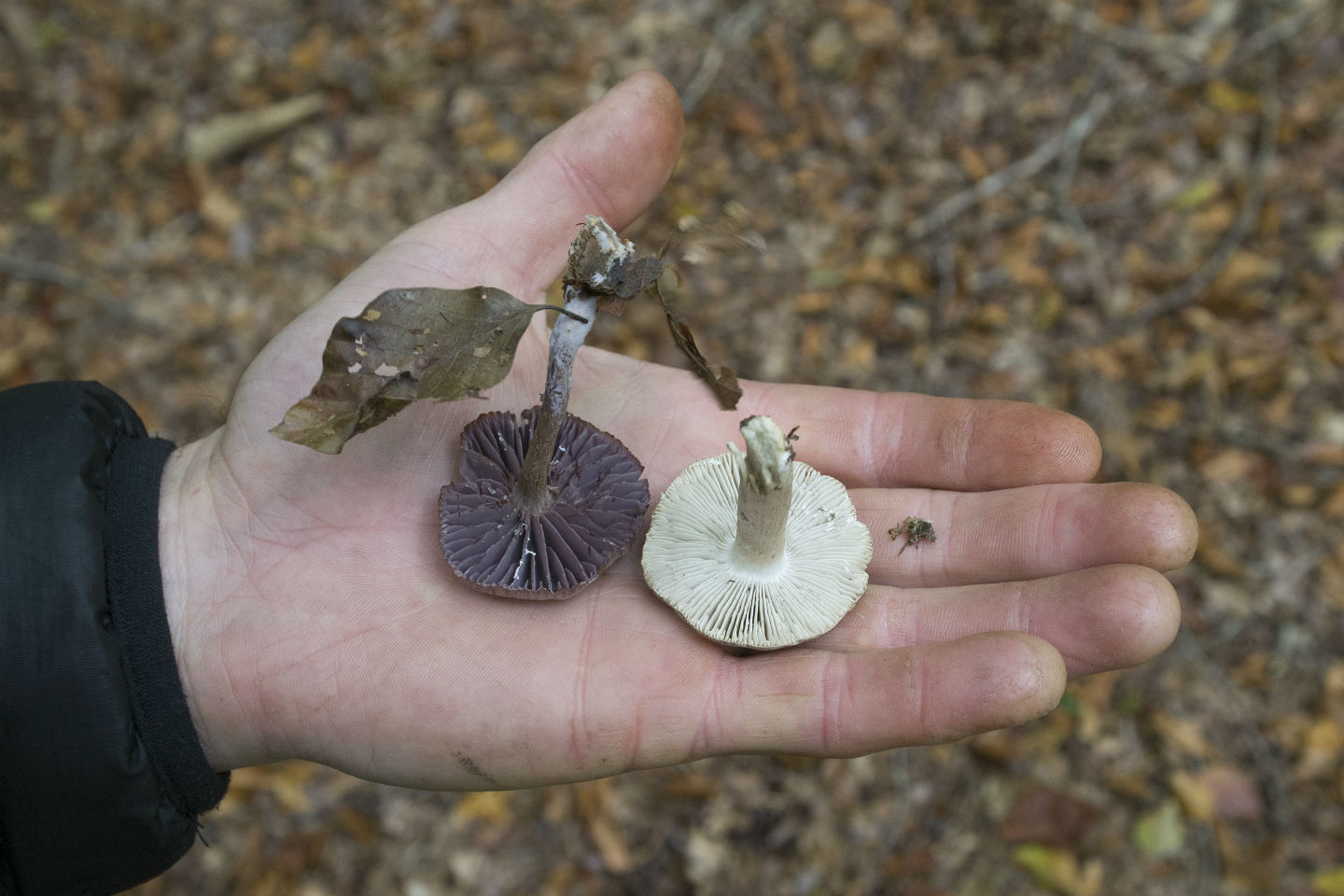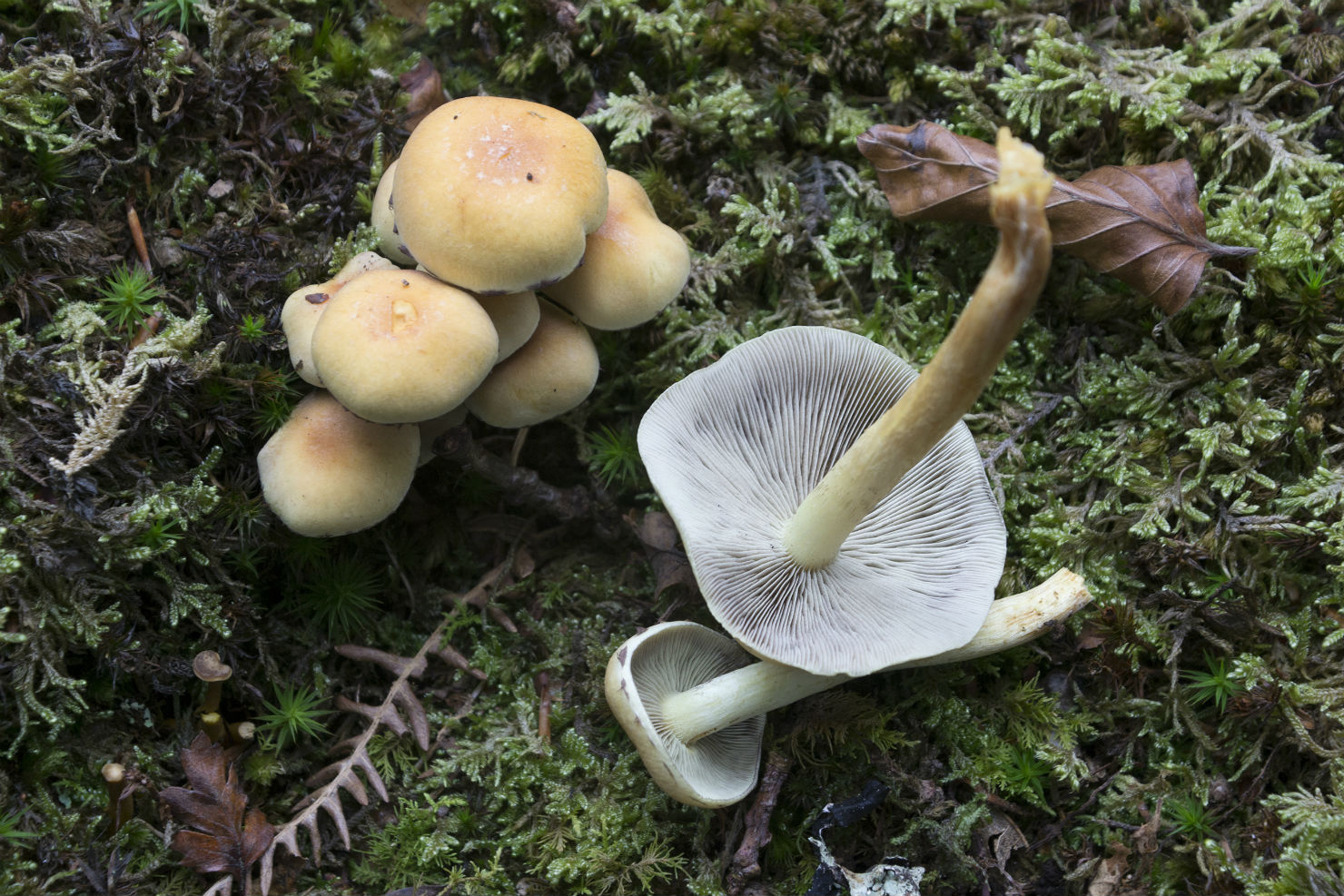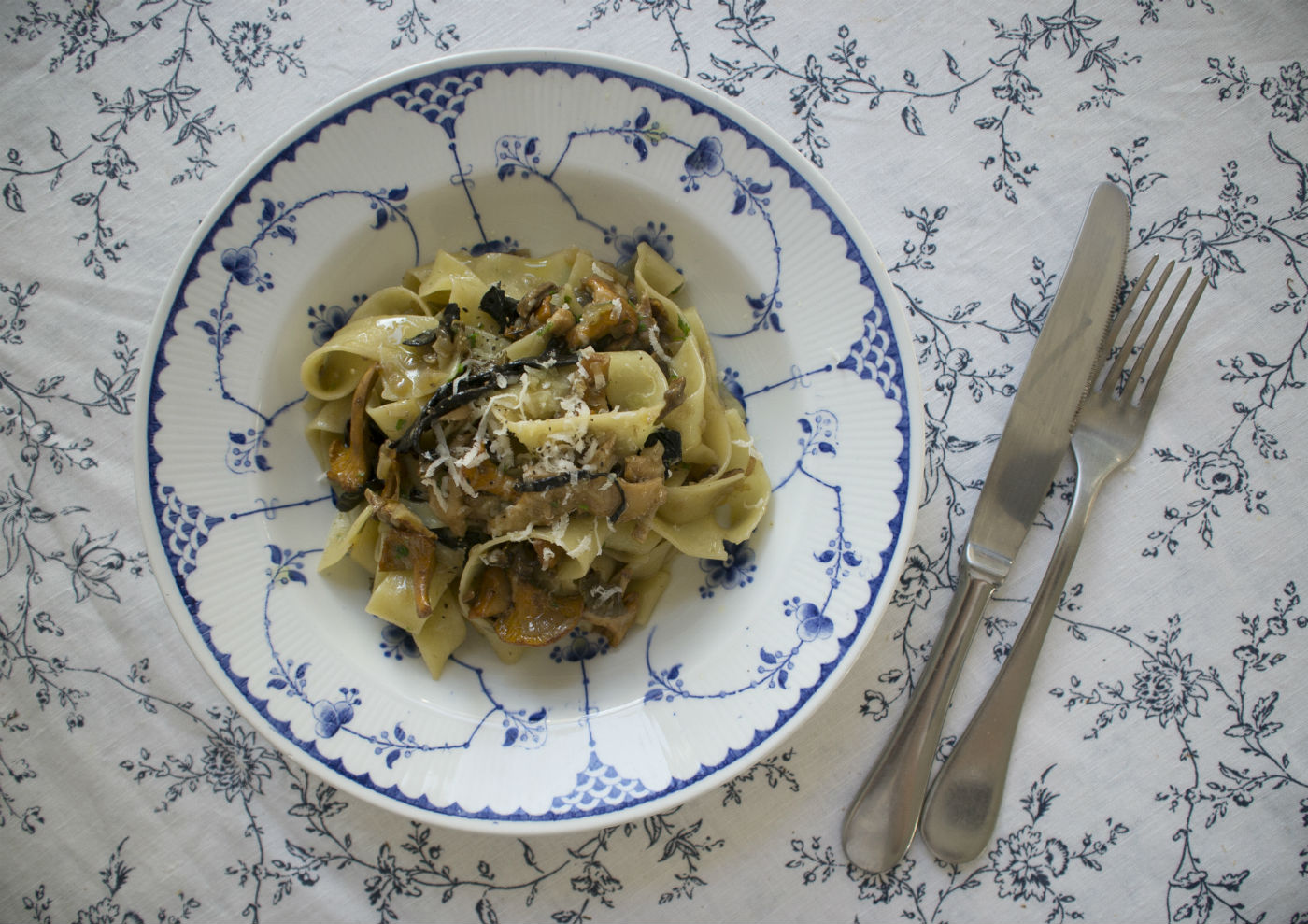
Autumn is the time of abundance – the market is laden with squash, pumpkins, cabbages, kales and leeks, not to mention apples, pears and quinces.
Autumn is also the best time of year to forage. It’s now that the wild plums, or bullace, sloes and damsons appear on the Heath and other wild parts of London. There are rosehips too; from big red bulbous fruit fit to burst, to tiny pellets that look like good for nothing but make a delicious cordial. Rowan berries make good jelly, and if you’re lucky enough to find medlars, make a cheese like membrillo. London streets, parks and railway sidings have a range of apples and orchard fruit from little crab apples weighing down the branches of their scrawny trees to elegant pear trees with boughs proudly laden with fruit.
Many say the prize draw of the season is mushrooms. Around London and the south east there are thousands of varieties of which a good few are edible. They appear at most times of the year but there is a much greater variety in the autumn – the warmth and, usually, the rain are just right and they nudge their way through the topsoil and gathering leaf-mould in vast quantities.
Last week I jumped at the opportunity to head out of Kentish Town to the New Forest with foraging expert John, from Forage London, for a masterclass. Obviously, mushrooms are very fragile, so you won’t find them anywhere that people frequently tread, but you needn’t stray far from the path. You need a careful eye, a little bit of experience, a note of caution and a good mushroom book.

As John and I strolled through the woods we discussed finding mushrooms in north London. He suggests taking great care in urban settings. Mushrooms are the surface fruit of deep-lying mycelia, big root systems that can grow far underground and stretch, in some cases, for kilometres. The mycelia are very good at absorbing compounds from the ground which become concentrated in the mushroom and in many instances, are toxic to humans. So it’s best to steer clear of mushrooms that grow on old bomb sites like Hackney Marshes, where the soil can be shallow with industrial materials, like asbestos, or cemeteries where the ground has large quantities of lead and arsenic.
Explore old parkland like Hampstead Heath, where mushrooms grow in soil which hasn’t been built on in centuries, if ever. Different mushrooms like different environments, from thick moist leaf-mould to bare forest lawns and open fields. In the New Forest we found a great selection of edible hedgehog mushrooms (hydnum repandum also known as pied de mouton), horn of plenty (craterellus cornucopioides or trompette de la mort), grey chanterelle (cantharellus tubaeformis) and yellow chanterelle (cantharellus cibarius or girolles).
If you’re lucky you’ll find ceps or even truffles – they do grow in the South East but only rarely. Make sure you take a good mushroom identification book with you as edible and poisonous ones can look very similar and if you are in any way unsure, just leave it alone. Although most aren’t poisonous, only some are really worth eating and a few can cause death or permanent organ damage.

Brush down your finds with a pastry brush or damp cloth and trim them as you pick; it’s much nicer done in a woodland setting than later on in the kitchen! Any trickier ones, like the horn of plenty with its deep trumpet, can be dunked in cold water, given a gentle shake and dried on a tea towel in a well-aired, cool place for a couple of hours.
The recipe I cooked with my mushrooms is very simple, but with a such a stunning ingredient it is important to make sure you really bring out their flavour and don’t overpower or complicate it too much.
Wild Mushroom Pappardalle (Serves 4)

4 shallots
3 cloves garlic
15 grams dried porcini, soaked in boiling water for at least half an hour
1 sprig thyme
300g cleaned wild mushrooms, like girolles, hedgehog, chanterelles, horn of plenty, boletes, blewits, cepes
2 tbsp. mascarpone
400g Pappardalle
2 tbsp. chopped parsley
Olive oil
Salt and pepper
Parmesan to serve
1. Heat 2 or 3 tablespoons of olive oil in a medium saucepan and add the finely diced shallots and a good pinch of salt. Cook them gently for a few minutes, stirring occasionally. Meanwhile, strip the thyme leaves from the stalk and add them. Lift the mushrooms out of their now cool water – reserving the liquid – and chop them medium fine. Add to the shallots and continue cooking untl the shallots are sweet and translucent. Add the garlic and continue to cook for another 2 or 3 minutes. Add the wild mushrooms and cook, gently stirring occasionally, over a medium heat for 4 or 5 minutes – until just wilted and tender. Stir in the mascarpone, season with salt and remove from heat.
2. Bring a large pan of well salted water to the boil, and cook the pasta to just before the manufacturers instructions. Drain and add to the saucepan with the sauce in. Return to a low heat and stir in a couple of tablespoons of the liquid from the porcini soaking, being careful not to let any of the grit from the bottom get in. Continue to gently stir, adding liquid until the sauce coats the pasta nicely and it’s perfectly al dente. Stir in the parsley.
3. Serve with freshly ground black pepper, finely grated parmesan, and drizzle of really good olive oil.


